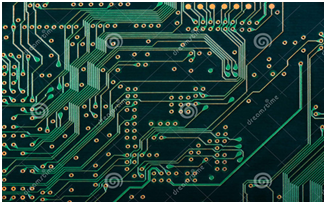PCB must take the road of green development
PCB is not only the main
mechanical support for fixing, linking and assembling all kinds of components, and
integrated circuits of an electronic product, but also the basic component
which can make electronic products have the advantages and characteristics of
high reliability, good consistency, high mechanical strength, light weight,
small volume, easy standardization and so on.
PCB can be called high-tech
products in the electronics industry, but now the development of PCB is
not only challenged by its own cost-effectiveness issues, but also from the
peripheral energy conservation and environmental protection challenges.
Therefore, PCB must take
the road of green development, and must put energy saving, consumption
reduction and pollution control on the important position of industry
development.
With the rapid development
of the industry, the competition in the PCB industry is becoming more and more
fierce. Carrying out energy saving and consumption reduction is not only the
implementation of the national energy saving and emission reduction policy, but
also an important means for enterprises to reduce production costs and improve
the competitiveness of enterprises.
Despite the overall is difficult,
the lengthy PCB process can be changed step by step, from part to part. It is
believed that "long process" and "short process" will
achieve energy saving.

First, we should make unremitting efforts to continue to promote digital inkjet printing instead of silk-screen printing. Promoting the use of 3D printing technology to replace the etching of PCB electronic circuits will be one of the ways for PCB enterprises to achieve energy saving.
Third, Increase efforts in the PCB electroplating link, the use of energy-saving electroplating power, improve the efficiency of electroplating, this can also receive surprising energy-saving effect
For example, in the field of the hole metallization, organic conductive film direct electroplating technology has been recognized and used by more and more enterprises in recent years.
There is also a hole metallization process without formaldehyde emissions. It not only improves the working environment greatly, but also simplifies the treatment method, saves water and electricity greatly, reduces the operation cost greatly, and makes the horizontal transmission easy to automate.
Fourth, in PCB enterprises to promote energy-efficient motors, transform technology for PCB production equipment. Innovative Energy Saving mode, it is expected to get about 20% power saving effect.
At present, the PCB industry cleaner production has started, but still need to move forward in a solid way.
In general, the development of the PCB industry relies on technology and energy-saving two-wheel drive, but the current energy-saving environmental protection for the PCB industry is more important, and even directly affect the survival of some enterprises.The realization of green manufacturing in PCB industry can not be achieved overnight. It must be regarded as the development direction of the industry.
This requires not only the promotion of laws and regulations, the guidance of policies, the formulation of standards and norms, but also the role of industry organizations to unite, lead enterprises, cooperate with each other, and coordinated development; finally, to abide by market rules and play the role of market mechanism in allocating resources.